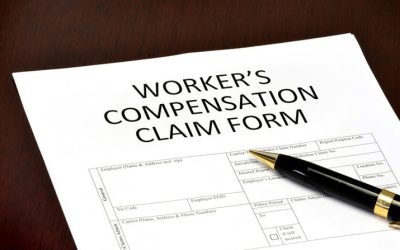Workers in various organizations are susceptible to workplace injuries and illnesses, and most of these are genuine or legitimate. However, there are some employees who commit fraud and try to secure workers’ compensation benefits for which they are not actually eligible. Workers’ compensation system works to make the benefits available only to deserving employees via processes such as stringent medical records analysis and other types of investigation that can establish the genuineness of the injury or illness. However, it is unfortunate that fraud occurs, costing businesses over $30 billion annually and leads to higher insurance premiums.
Warning Signs of Fraud
An employee may falsely claim a work-related injury in an attempt to collect workers’ compensation benefits. He/she may claim that the injury occurred at work whereas it actually happened outside of the work environment. Another type of fraudulent claim occurs when an employee exaggerates the severity of an injury or prolongs an injury to secure a larger amount as insurance benefit. This highlights the importance of identifying workers’ compensation fraud so that higher workers’ compensation costs and higher premiums can be avoided. So, what are the warning signs of fraud?
- Timing of the claim: An employee who files a claim immediately following his/her termination may be committing fraud. Another warning sign is when the alleged injury occurred first thing on Monday morning, or it occurred late Friday afternoon but was not reported until Monday.
- Employee has a history of filing claims: Some workers may be genuinely more prone than others to get injured or sick. However, this may not always be the case. If a worker repeatedly files claims or has a history of doing so at previous places of employment, it is a warning sign. Also, you need to scrutinize the employee’s medical history to make sure that he/she is not taking an old disability or injury and presenting it as a recent one.
- Descriptions don’t add up: The worker’s description of the accident doesn’t tally with the medical history or first report of injury.
- Suspicious care providers: If the worker’s medical providers or legal consultants have a history of handling suspicious claims, or the same providers and lawyers are used by groups of claimants, you can suspect fraud.
- No witnesses: When there are no witnesses to the accident, and there are inconsistencies in what the worker says, he or she could be lying. Then you need to examine the claim more astutely.
- The employee refuses treatment: In this case, the claimant may refuse a diagnostic procedure to confirm the nature and extent of the injury.
- The employee doesn’t co-operate: The allegedly disabled claimant is hard to reach at home. He/she is inaccessible to your staff, and doesn’t return phone calls or emails promptly. He/she is uncooperative, and unwilling to make the required changes so that they can return to work.
- Change in employment: The alleged accident and injury occurred immediately before or after a strike, layoff, job termination, conclusion of seasonal work, or at the end of a big project.
- Delay in reporting the claim: The employee is late in reporting the claim and does not offer a reasonable explanation for the delay.
- Many providers and employers: The claim may be a fraudulent one if the claimant has a history of frequently changing employers, doctors, or addresses.
Fraud Prevention Measures
Here are five considerations for employers that will help them prevent workers’ compensation fraud in their organization.
- Zero tolerance policy on fraud: Employers must encourage workers to immediately report suspicions of potential fraud. Employers must make it clear that they will not tolerate any kind of fraud.
- Ensure you are hiring honest workers: This can be ensured if you have a solid hiring procedure. A thorough background check will reveal previous fraudulent claims.
- Have a good safety program: Ensure that all employees understand safety policies and procedures. Regular safety meetings are necessary and have workers sign relevant safety policies. Also, reward employees who meet safety goals.
- Consider legally authorized video surveillance of the workplace.
- Identify red flags immediately: A criminal record, blown-up description about the incident or symptoms, lack of witnesses and a blemished work record are warning signs to take note of.
If you suspect workers’ compensation fraud in your organization, report it immediately to the appropriate law enforcement authorities or the workers’ compensation insurer’s special fraud investigation unit. Make sure to gather as much information as possible, document any suspicious statements, and identify witnesses. Employers, workers’ compensation attorneys, and medical chart review companies assisting attorneys work to ensure that genuine claims are compensated. However, potentially fraudulent claims must be identified and fraudsters must be appropriately dealt with. Understanding the warning signs of fraud and identifying fraudulent claims at an early stage itself will help avoid disputes and chaos. More importantly, it will also help ensure that other workers don’t make an attempt to file fraudulent claims in the future.




